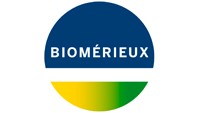bioMérieux Launches Two Innovative Solutions to Detect Food-Borne Pathogens: chromID™ Sakazakii and chromID™ Vibrio
 12 Juni, 2008
12 Juni, 2008
bioMérieux, a world leader in the field of in vitro diagnostics, is enhancing its line of food safety solutions with the launch of two innovative chromogenic culture media, chromID™ Sakazakii and chromID™ Vibrio.
Enterobacter sakazakii is considered to be a neonatal pathogen. Its presence in infant food products, including powdered milk, can cause meningitis, sepsis and other serious infections, primarily in newborn or premature infants. 40% to 80% of children who become infected die¹, and those who survive can suffer severe and long-lasting complications.
The chromID Sakazakii medium fills the need for precise, reliable controls. Its innovative formula reveals two Enterobacter sakazakii-specific enzyme activities that offer a high level of detection sensitivity in just 24 hours of incubation.
Vibrio are bacteria that are naturally present in environmental water and are strongly resistant to high salt concentrations.
chromID Vibrio detects two species that are especially harmful for humans. Vibrio parahaemolyticus and Vibrio cholerae are responsible for severe intestinal diseases including cholera. Cholera is still found in more than 80 countries, and is responsible for approximately 100,000 deaths each year².
“Protecting consumer safety is a priority for bioMérieux, and we are pleased to be able to offer an innovative technology for detecting two food-borne pathogens that cause severe infection,” stated Alexandre Mérieux, bioMérieux Corporate Vice President, Industrial Microbiology.
bioMérieux is a pioneer in the development of chromogenic culture media. The high degree of specificity of this media limits the number of confirmations and its innovative formulation, with chromogenic substrates, makes reading easier and provides significant time-savings for laboratories. Today, the company offers agri-food laboratories a complete line of chromogenic media, meeting the strictest quality requirements.
About Enterobacter sakazakii
Enterobacter sakazakii is an enterobacterium that is naturally present in the environment and can be found in various foods, most notably dehydrated products. Considered a neonatal pathogen, when present in infant food products, it can cause serious infections such as neonatal meningitis or necrotizing enterocolitis, as well as the deaths of 40% to 80% of children infected.
Detection of the bacteria in this type of food was made mandatory in Europe by regulation CE 2073/2005, amended in 2007.
- chromID™ Sakazakii Innovation
Because of its formula combining 2 chromogenic substrates, chromID Sakazakii demonstrates 2 Enterobacter sakazakii-specific enzyme activities – D-glucopyranosidase and βD-cellobiosidase – thus offering a very high level of detection sensitivity within 24 hours of incubation. Validated for detection per various enrichment protocols and for incubation at 35-37°C as well as at 41.5°, it offers great flexibility of use.
About Vibrio
Vibrio are bacteria that are naturally present in environmental water and particularly resistant to high salt concentrations. Some species are more specifically pathogenic to humans, such as Vibrio parahaemolyticus and Vibrio cholerae, which are the most common causes for severe intestinal diseases.
Vibrio parahaemolyticus is transmitted through the consumption of fish and seafood, and is the primary cause for toxic infections in Japan and tropical countries.
Vibrio cholerae is transmitted through water and water-contaminated foods. Cholera is a disease that is still found in more than 80 countries and is responsible for an estimated 100,000 deaths per year.

- chromID™ Vibrio Innovation
The combination of a chromogenic substrate to reveal βgalactosidase activity, a sugar, and an inhibitor cocktail, allow for the specific and distinct detection of Vibrio parahaemolyticus and Vibrio cholerae.
1. Bowen AB, Braden CR. Invasive Enterobacter sakazakii disease in infants. Emerg Infect Dis 2006; 12:1185-1189
2. WHO
About bioMérieux
Advancing Diagnostics to Improve Public Health
A world leader in the field of in vitro diagnostics for 45 years, bioMérieux is present in more than 150 countries through 38 subsidiaries and a large network of distributors. In 2007, revenues reached €1.063 billion with 84% of sales outside of France.
bioMérieux provides diagnostic solutions (reagents, instruments, software) which determine the source of disease and contamination to improve patient health and ensure consumer safety. Its products are used for diagnosing infectious diseases and providing high medical value results for cardiovascular emergencies and cancer screening and monitoring. They are also used for detecting microorganisms in agri-food, pharmaceutical and cosmetic products. bioMérieux is listed on the NYSE Euronext Paris market (Code: BIM – Code ISIN: FR0010096479). Other information can be found at http://www.biomerieux.com/

